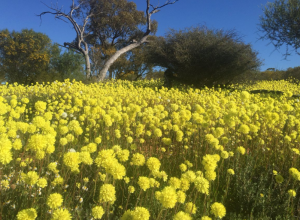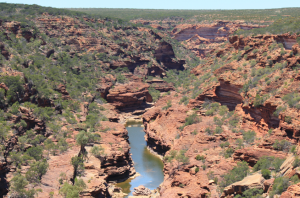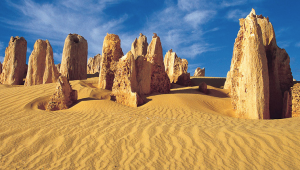PRE-CONFERENCE FIELD TRIP
This three-day and two-night tour will traverse through three biodiversity hotspots that are renowned for their high levels of endemism and intrinsically rare species – Eneabba, Kalbarri and Mt Lesueur. These three areas comprise nearly 3000 plant species including 100 species of terrestrial orchids and a host of threatened species. The tour will include opportunities to see restoration activities on biodiverse landscapes while seeing first hand dramatic impacts of climate change on native ecosystems.
Day 1: Perth – Cataby – Eneabba – Coalseam Conservation Park – Geraldton

Day1 will see the tour pass through the distinctive Banksia shrublands of the Eneabba region that hosts a variety of unique species. It will also showcase restoration efforts of a mineral sands mine in this biodiverse system and the expertise of local indigenous groups in collection and processing of native seeds. After this, the tour will proceed to Coalseam Conservation Park, among the most botanically diverse areas in the northern Wheatbelt region of the Midwest of Western Australia. This acacia shrubland, with its sparse understorey, comes alive with “everlasting” wildflowers after good winter rains. The final destination will be Geraldton, a coastal town that is a hub for agricultural and mining industries in the Mid-west of Western Australia.
Overnight in Geraldton
Day 2: Geraldton – Northampton – Kalbarri – Port Gregory – Geraldton

Day 2 will be spent viewing rare flora conservation sites in Northampton before moving to Kalbarri National Park, an area that hosts unique and highly endemic flora within the sandplains and the Murchinson River gorges. Kalbarri National Park has a total of 1071 flowering plants with 30 endemic species including rare orchids. Kalbarri is noted for its spectacular geological formations and coastal scenery with opportunities for whale watching with the southern migration of the Southern Right and Humpback whales. Further highlights will include the inter-zone flora near the margin of Western Australia’s Mediterranean-type ecosystem. The highlight of the Port Gregory stop will be the Hutt Lagoon, a magnificent pink lake. The colour of the lagoon is due to a bacterium (Dunaliella salina). This provides a rich source of Beta Carotene, which is harvested from small ponds.
Overnight in Geraldton
Day 3 – Geraldton – Mt Lesueur – Pinnacles – Perth

Day 3 highlights will include the Greenough river flats highlighting the river gums (Eucalyptus camaldulensis) with trunks bent at right angles due to prevailing winds. Following this they will investigate the sandy beaches and adjacent calacareous dune vegetation at Leeman. The highlight of day three will be a stop at Mt Lesueur, a biodiversity mini-hotspot that supports up to 110 species /100m2. Here you will see more endemic species and diversity than any other stop on the trip. The final stop for the trip is the Pinnacles. This is a unique desert-like environment consisting of massive columns comprising fossil remains of tree roots as well as good examples of coastal vegetation. They conclude the trip overlooking the Indian Ocean with sunset drinks before heading back to Perth.
Arrive in Perth
